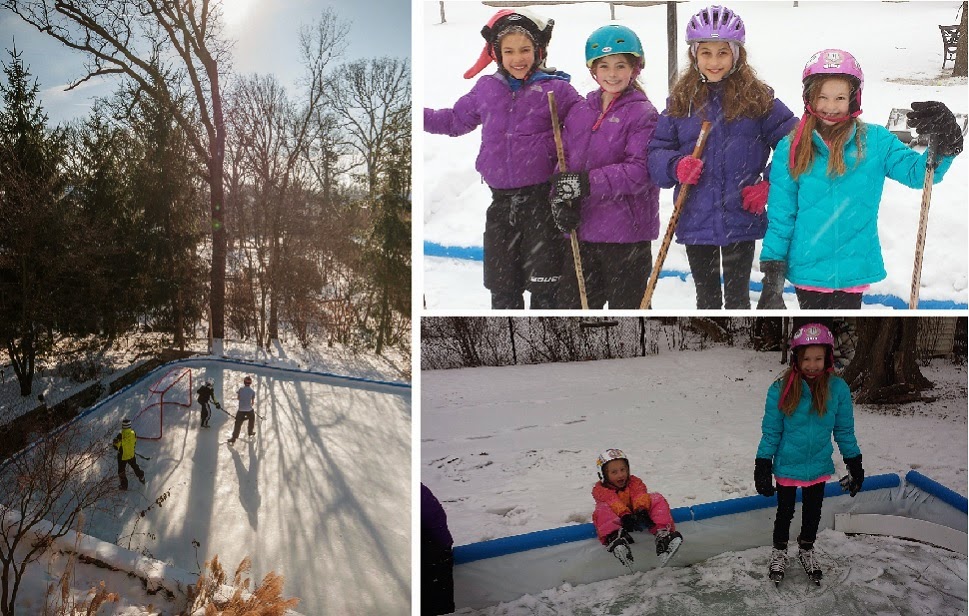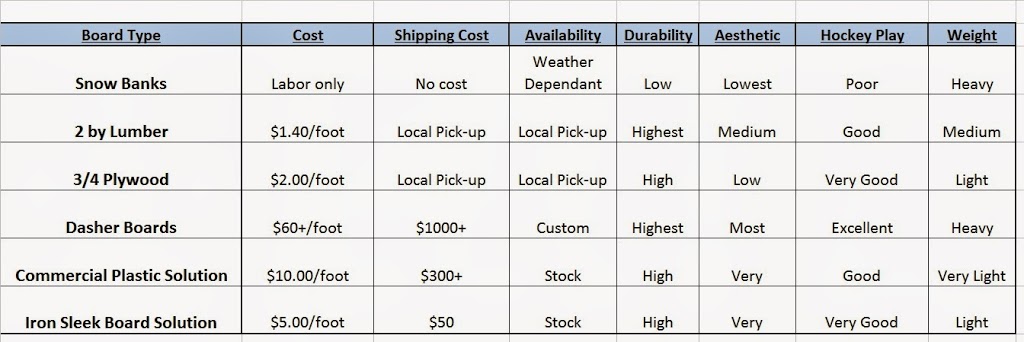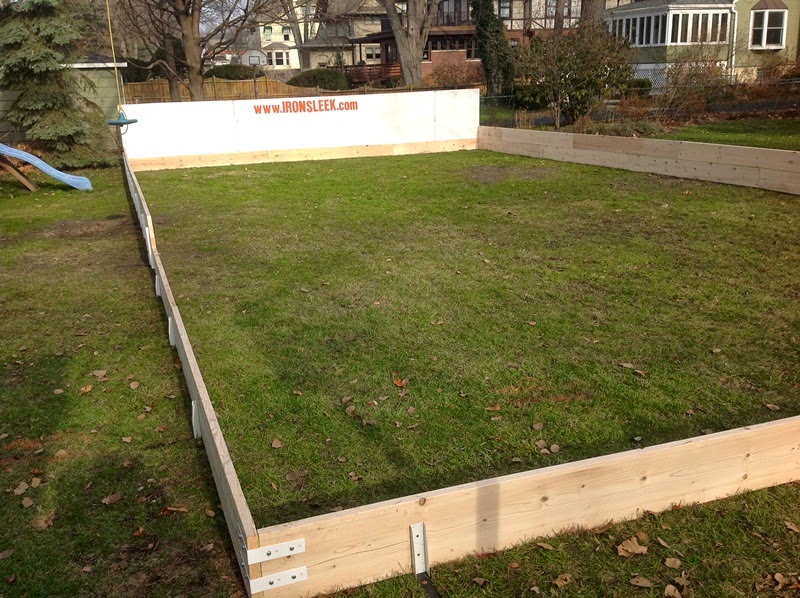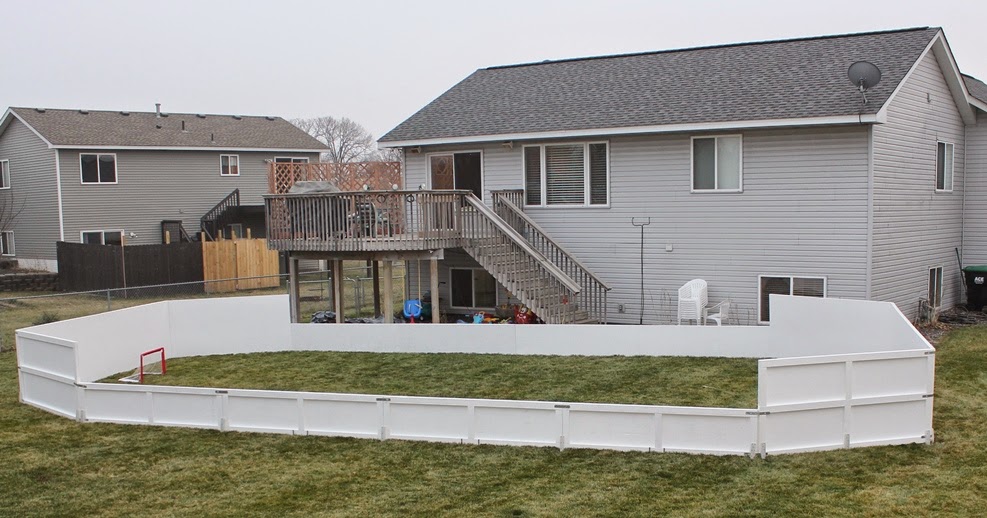The beauty of smooth shiny ice under the clear evening moonlight and the crisp sound of skates cutting ice with the playful laughter of children and the aroma of fresh burning logs in the background air are definitely impressions that stick when we think of our backyard rinks…truly EPIC!!
All this is possible because a containment holds water in place allowing it to transform to the expanding miraculous ice when the ambient sinks below 32 degrees. The containment has a great function but it also adds character and personality to an outdoor rink. There are many materials that are commonly used to contain water to form an outdoor rink. Some options for rink boards are: dashers boards, 2” by lumber, plywood, commercial plastic, and snow banks. These are all good options but it is up to the rink designer to choose between cost, effort, aesthetics, and their overall vision for the rink. The chart and dialog below is a good starting point to understand some of the differences between the various options.
Let’s start with the most deluxe…Dasher Boards.
Real hockey dashers are rigid metal frames, 48” tall, with ½” poly permanently attached to the frames that can sustain rough hockey play. Dasher boards are usually permanently mounted, heavy, and require construction professionals for installation. They are usually well decorated with a base trim and a colored top ledge. There are companies in Canada and the US who have mastered this mainly commercial market. Heavy duty, metal framed dashers with ½” poly boards cost over $100.00 per linear foot. There are custom wood frame options starting at $60 per linear foot or aluminum frame options that start at $30 per linear foot. Iron Sleek does not provide dashers but we would be happy to discuss other cost effective board solutions for you that could make your rink board look and play like dashers.
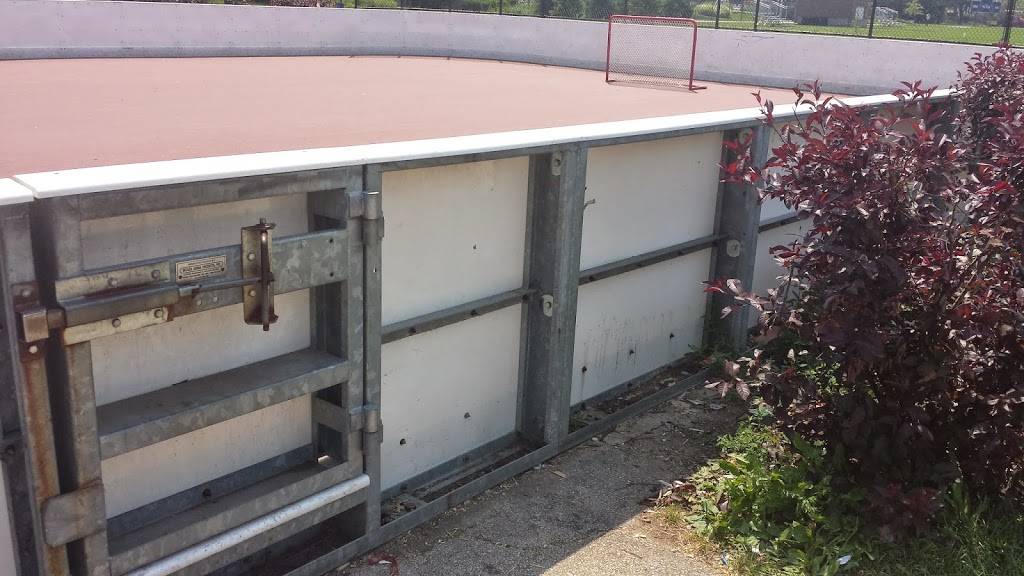 |
| Steel Framed dashers with 1/2″ Poly |
“2 by” lumber is a great choice for building a skating rink. 2 by 12’s or 2 by 10’s are readily available in both Canada and the USA. In Canada, 2 by 10’s are best the value. Contrarily, in the US, 2 by 12’s are more favorably priced. There are many benefits for using 2 by 12 lumber for rink boards. 2 by 12’s come in a wide range of lengths so our customers can build a rink without a single cut. Also, 2 by lumber comes in very long lengths. Our local lumberyard even has 20 footers. With 20 foot boards, Iron Sleek’s 20 by 20 rink kit could be built with just 4 boards…No Seams! Just as an FYI, most of our customers who use 2 by 12’s buy them in 10 foot length as they fit just perfectly in a minivan. Some other benefits are that 2 by lumber is durable, easily stacked to build a 2nd story with the Iron Sleek extension bracket, and is the most cost effective solution for building a basic rink enclosure. 2 by lumber is also a tough construction material as it is strong enough so fewer Iron Sleek brackets could be spanned across the boards. Another benefit of “2 by” lumber is that it is milled with a radius edge which helps prevent liner cuts where plywood has a sharper splintery edges. Some short comings on using lumber for an outdoor rink is that that lumber is heavy and sometimes boards can warp if not stored properly. Iron Sleek base cove works out great for to fill the gaps on warped boards. Some other challenges with 2 by lumber is that the boards are heavy, they can split along the grains, and they can warp with time. All in all, for about $1.25-1.50 per foot investment, 2 by lumber is a great inexpensive solution for building a skating rink. Some tips on using lumber:
· Be careful to not miscalculate lumber sizes. “2 by” lumber is just a nominal size. The actual thickness of the lumber is only 1 ½”. The same is true for the height. For example, a 2” by 12” is acutally 1 ½” by 11”.
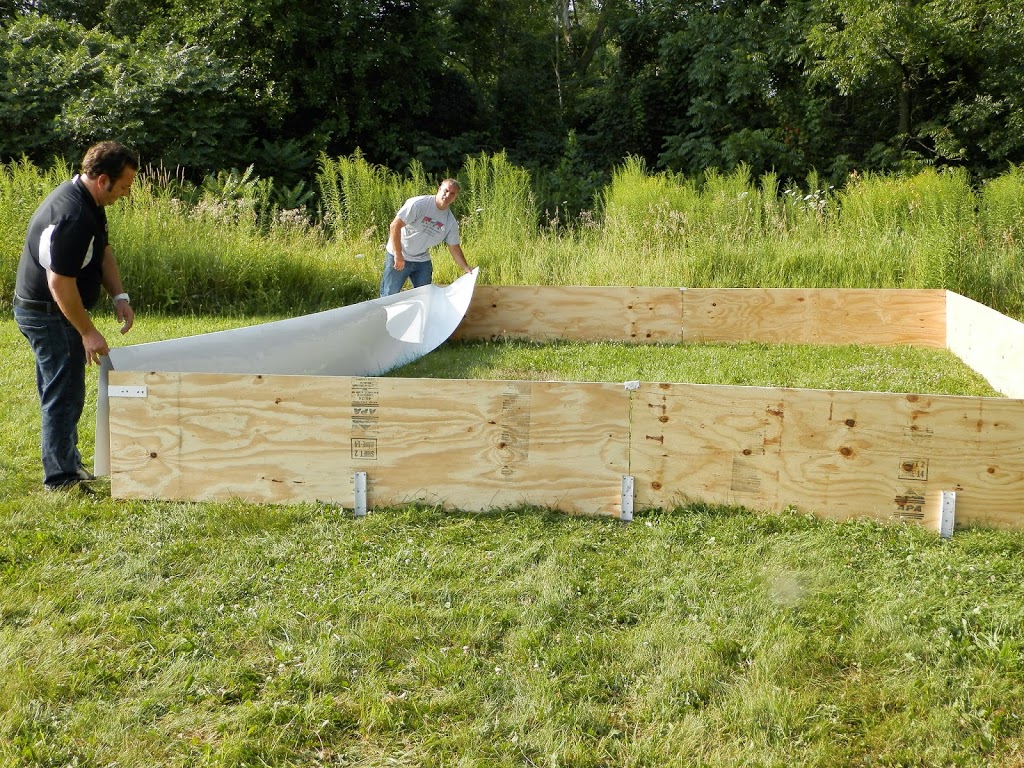 |
| STEP 2 |
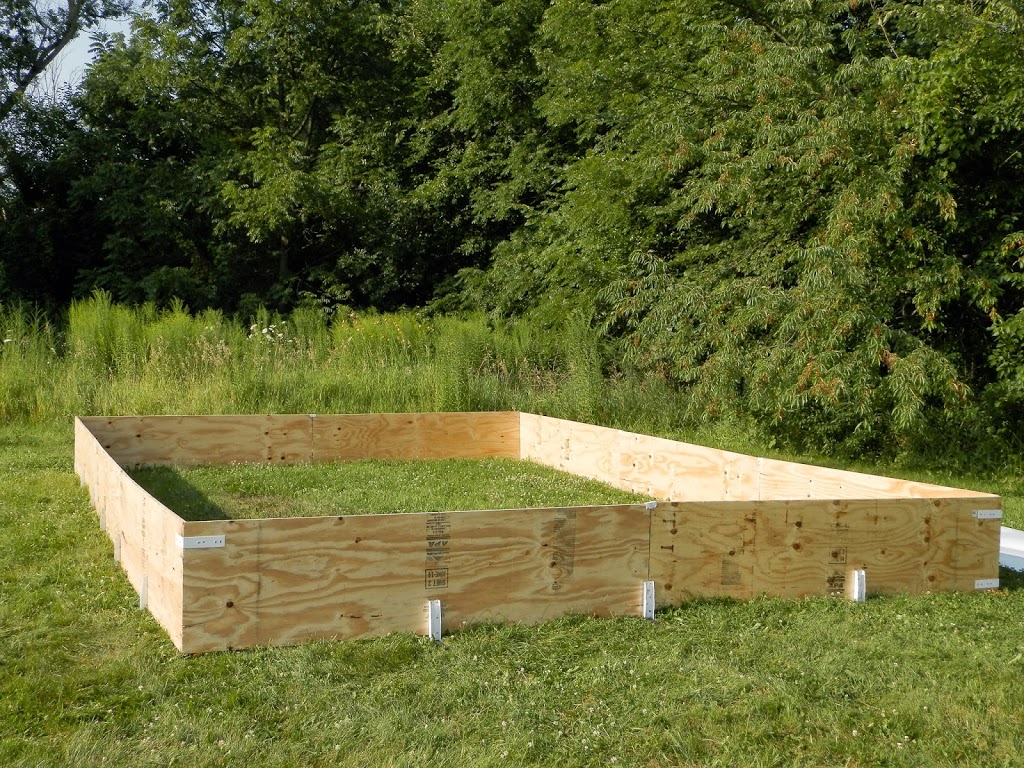 |
| STEP 1 |
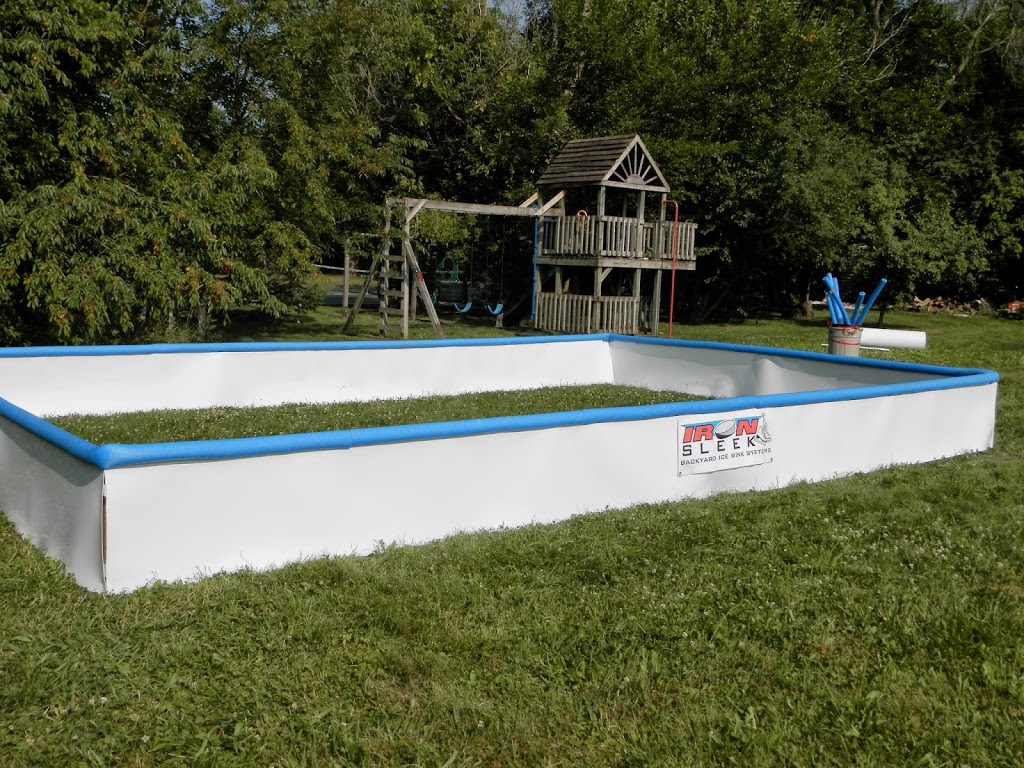 |
| STEP 3–PLYWOOD TRANSFORMED |
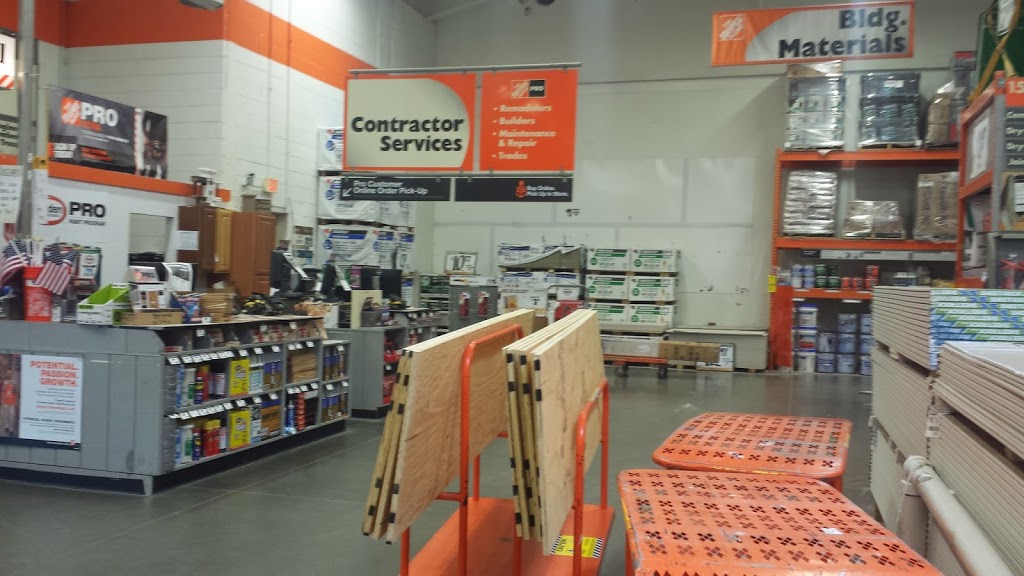 |
| Materials store can cut the lumber |
Some of the challenges with plywood are:
· Plywood sheets must be ripped. I recommend asking your lumber provider to rip the plywood or you will be stuck with a time consuming tedious job of sawing. Sometime lumber yards rip plywood at no cost. In Chicago, Home Depot will rip up to 10 boards at no cost.
I built my first rink 20 years ago with snow banks. 20 years ago, I quickly learned that snow banks are not a reliable way to contain an ice rink using the liner method. The main reason is that the snow will melt on a mild day and your rink will soon wash away. Also, when you are filling your rink, the snow bank will start to melt from the warmer water. Yes, snow is free, but if you are serious about having a backyard family rink, choose a construction material as a rink board. Snow banks are exhausting to maintain; however, they are still commonly used on ponds as it is difficult to bring construction materials to the edge of a lake. Iron Sleek has simplified building a rink on a pond and has provide an alternative to snow banks with the Iron Sleek Pond Bracket. See video below:

